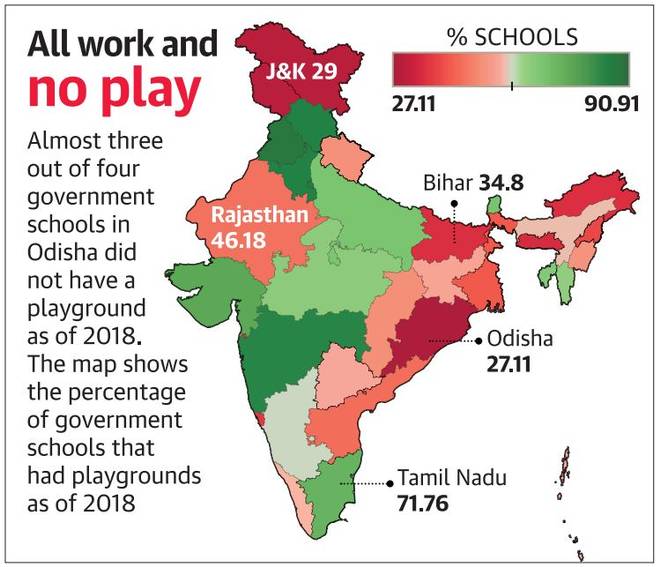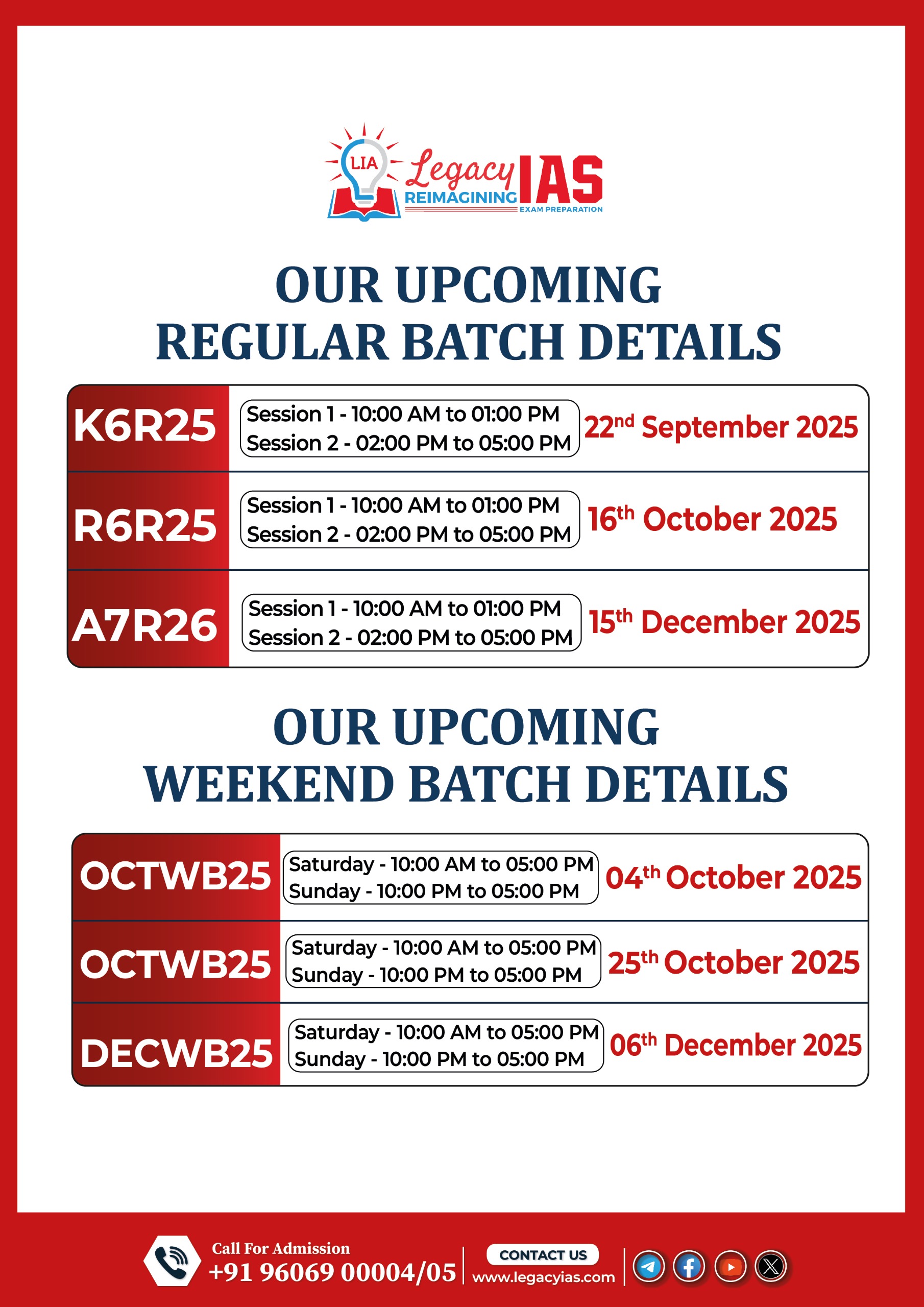Focus: GS-II Social Justice
Why in news?
- Almost half of government schools in the country don’t have any electricity or playgrounds, according to a parliamentary panel on education.
- It identified shortfalls in both budgetary funding and utilisation, resulting in critical infrastructure gaps.
Concerns of the Parliamentary Standing Committee
- The Parliamentary Standing Committee on Human Resource Development (HRD), in its report on the 2020-2021 demand for grants for school education, expressed concern that the budgetary allocations saw a 27% cut from proposals made by the School Education department.
- The panel “expressed dismay” at the stark deficits in government school infrastructure, citing the latest survey data.
- The parliamentary panel also expressed concern about the rate of progress in building classrooms, labs and libraries to strengthen government higher secondary schools. Out of 2,613 sanctioned projects for 2019-20, only three had been completed in the first nine months of the financial year, said the panel, warning that such delays would alienate students from government schools.
Details of the Shortcomings

- Only 56% of schools have electricity, with the lowest rates in Manipur and Madhya Pradesh, where less than 20% have access to power.
- Less than 57% of schools have playgrounds, including less than 30% of schools in Odisha and Jammu and Kashmir, according to the Unified District Information System for Education (UDISE) 2017-18 survey.
- Almost 40% of schools did not have a boundary wall, endangering the safety of students and school property.
Recommendations of the Committee
The panel recommended that:
- The HRD Ministry collaborate with the Mahatma Gandhi National Rural Employment Guarantee Scheme (MGNREGS) to construct boundary walls
- The HRD Ministry can also work with the Ministry of New and Renewable Energy to provide solar energy and other renewable energy sources so that schools have access to power.
- The department should look into the factors impeding the infrastructure development and resolve them at the earliest so as to ensure that the students get the best possible facilities.
Main Objectives of HRD (Human Resource Development) Ministry
- Formulating the National Policy on Education and to ensure that it is implemented in letter and spirit
- Planned development, including expanding access and improving quality of the educational institutions throughout the country, including in regions where people do not have easy access to education.
- Paying special attention to disadvantaged groups like the poor, females and the minorities
- Provide financial help in the form of scholarships, loan subsidy, etc. to deserving students from deprived sections of the society.
- Encouraging international cooperation in the field of education, including working closely with the UNESCO and foreign governments as well as Universities, to enhance the educational opportunities in the country.
Samagra Shiksha Scheme
- Samagra Shiksha is an overarching programme for the school education sector extending from pre-school to class 12.
- The scheme has been prepared with the broader goal of improving school effectiveness measured in terms of equal opportunities for schooling and equitable learning outcomes.
- It subsumes the three Schemes of Sarva Shiksha Abhiyan (SSA), Rashtriya Madhyamik Shiksha Abhiyan (RMSA) and Teacher Education (TE).
The major objectives of the Samagra Shiksha Scheme are
- Provision of quality education and enhancing learning outcomes of students;
- Bridging Social and Gender Gaps in School Education;
- Ensuring equity and inclusion at all levels of school education;
- Ensuring minimum standards in schooling provisions;
- Promoting Vocationalisation of education;
- Support States in implementation of Right of Children to Free and Compulsory Education (RTE) Act, 2009; and
- Strengthening and up-gradation of SCERTs/State Institutes of Education and DIET as a nodal agencies for teacher training.
Major Features of the Samagra Shiksha Scheme
- Holistic Approach to Education
- Administrative Reforms
- Enhanced Funding for Education
- Focus on Quality of Education
- Focus on Digital Education
- Strengthening of Schools
- Focus on Girl Education
- Focus on Inclusion
- Focus on Skill Development
- Focus on Sports and Physical Education
- Focus on regional Balance



